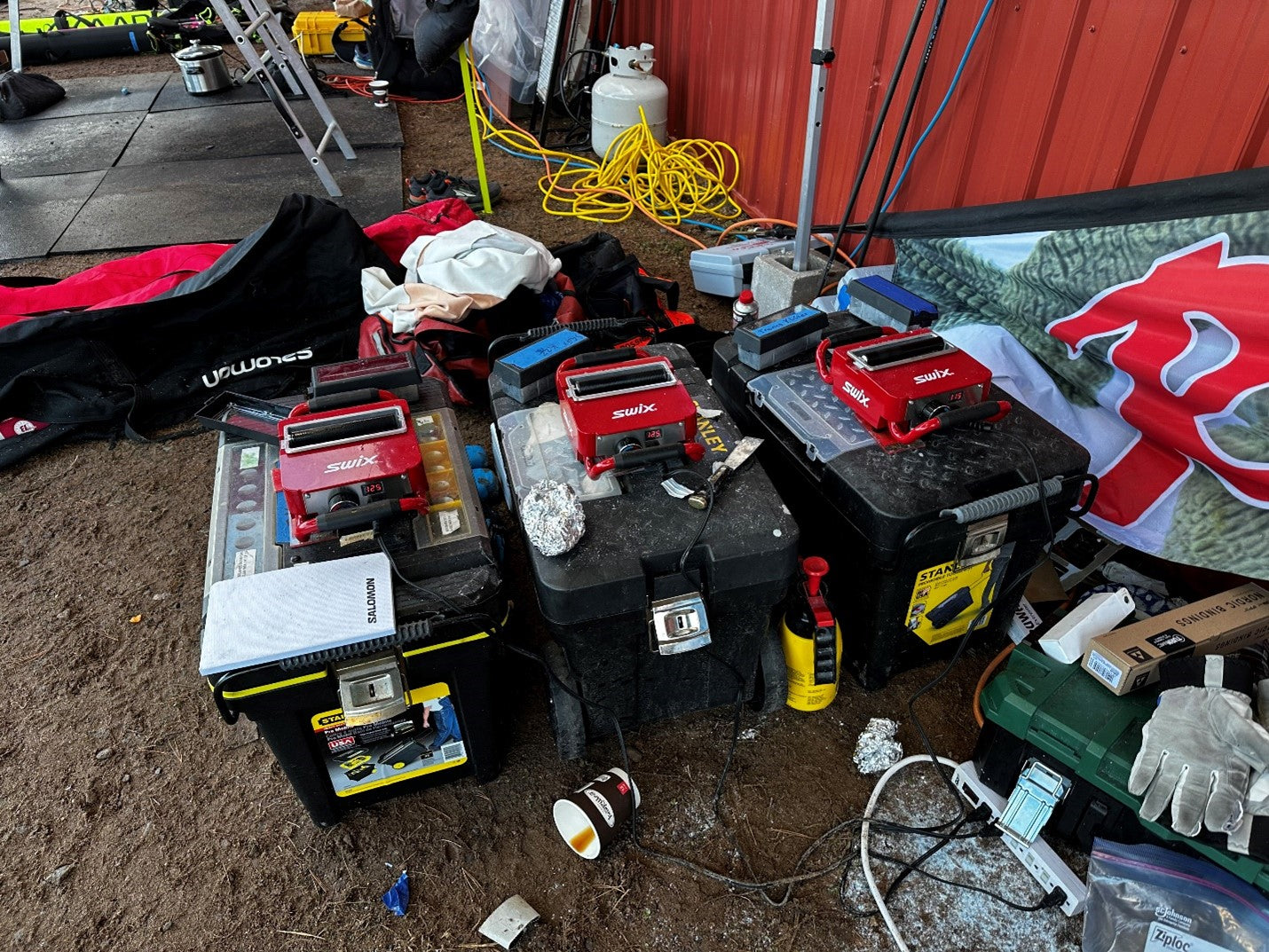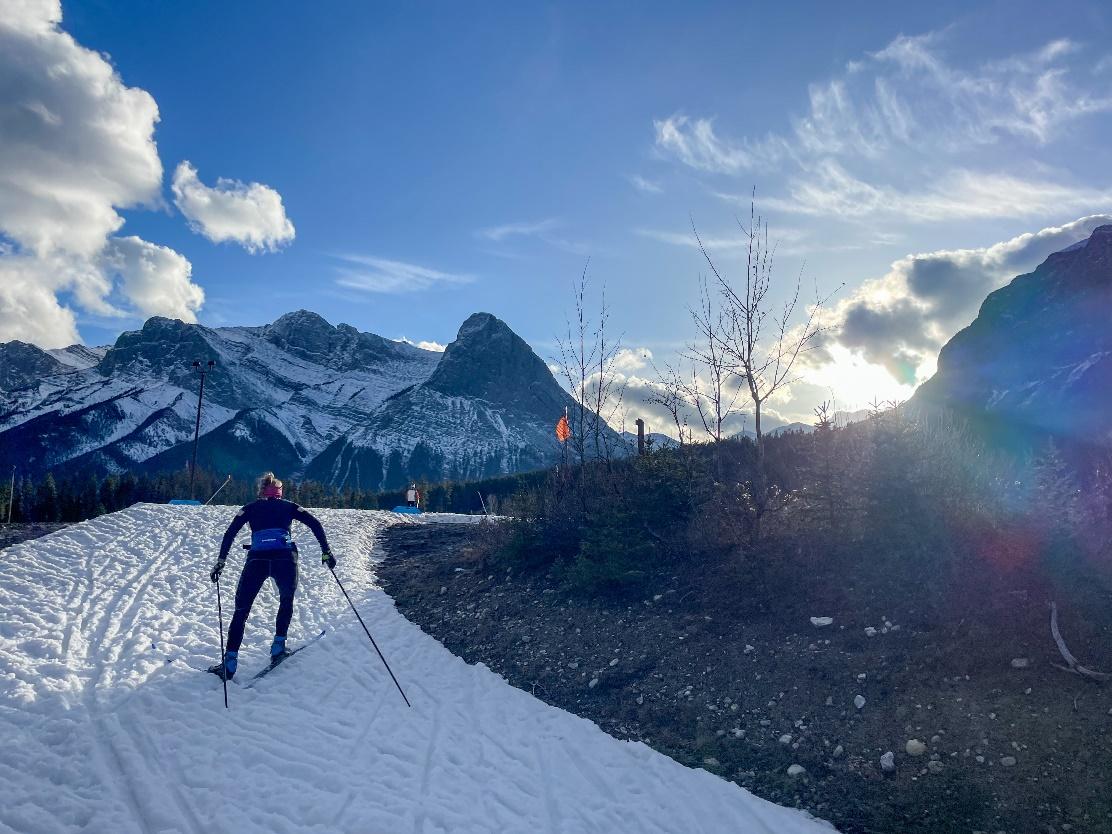The first JNQ races of the year are finished up and I am going to try to continue the tradition of releasing our results from testing over the weekend. When we head up to these JNQ’s our main focus is to help athletes that do not have team support. Our second focus is to increase our own wax, grind, structure, and ski knowledge and pass that information along to anyone that is interested.
December 9th – Skate Sprint
We had been lucky this season to have just enough cold weather be able to host the first JNQ races of the season in Duluth. The base was 100% man-made and definitely on the dirtier side with the warmer weather during the week. We started the week with some pre-testing of melt-on paraffin on the manmade snow at Elm Creek on Thursday which we guessed would be similar conditions to what we would see in Duluth. We tested 8 total waxes, with the top three listed below:
- Swix TSP10
- Rex NF21
- Rode Endurance
We decided to apply Rex NF21 based on our testing from last year showing great promise, and that it is easier to apply to 30+ pairs of skis than a powder paraffin when using a roller. When we arrived in Duluth on Friday morning, we got on snow right away to go through a cold application test. Cold applications are also commonly reffered to as top coats or toppings in the non-fluoro world now. We tested both liquids and roto wool blocks, in addition to having our melt-on paraffin as a baseline to see if cold applications help.
- Rex NF21 (Melt-On)
- Rex NF41
- Star Beta Warm Liquid
- Swix TSP10 (Hand fleece)
These results were quite interesting to us. We knew that the paraffin we were racing on was competitive from our previous day of testing, but to see it win our test of cold-applications was unexpected for both Max and I. Because of these results we shifted our testing on race day to more application focus instead of product focused. We have seen and heard that application of products makes as much of an impact, if not a larger impact on ski speed than the actual product itself. Different application techniques can be different iron temperatures, roto wool, or layering. For the limited amount of time we have on race day to prep skis, we chose to focus on the brushing/wooling methods. We still added the winning cold application from the previous day to see if conditions have changed to favor liquids.
- Rex NF21 > Scrape > Brush > Rex NF41 Liquid >Brush
- Rex NF21 > Scrape > Roto Wool > Brush
- Rex NF21 > Scrape > Brush
- Rex NF21 > Scrape > Brush > Rex NF21 Roto Wool > Brush
The only one of these that felt bad was the roto wool application of NF21. The other three felt great! Rex NF41 was an awesome topcoat for the day, and we ended up combining the top two application methods to make our race skis. Our final preparation of skis was:
Rex NF21 > Scrape > Roto Wool > Brush > Structure > Rex NF41 Liquid > Brush
December 10th – Classic Individual
We had some wild weather on Saturday afternoon/evening which meant that we needed to start with a clean slate on testing. Because it was a classic race, we put all of our focus into kick testing and made a safe call with our glide wax of the day. We ended up choosing Rex NF21 which we already had applied to the skis and decided to not do a cold-application. If we got time, we would test a little bit of structure and add that just before athletes took their skis to the start line.
For the weekend we were camped out right next to Sam Myers from the University of Wisconsin – Green Bay and teamed up with them for testing kick for the day. The plan going into the day was to look at klisters right away, then follow up with testing klister covers. During our initial klister tests, we found a lot of really good options and it was pretty much splitting hairs on which one to go with.
1a. Swix K22 > Fast, not enough kick
1b. Extreme Hard 39 > Fast, decent kick
2a. Rex Gold > Decent Speed, decent kick
2b. Rex Gold Moly > Slower than 2a, comparable kick
3a. Rode KM3 > Fast, not enough kick
3b. Swix KN33 > Bomber kick, decent speed
Picking the right option is knowing who you are waxing for. If I were to be waxing for world cup athletes vs. Midwest junior athletes the choice of which wax will be very different. I always lean towards the side of giving the junior athletes better kick over better glide (still would like both!). So the wax that we went with was Swix KN33 because of how solid the kick wax and still felt like it moved fairly well. Sam Myers at Green Bay chose one of the slightly faster options knowing that the athletes he was working with are a bit stronger.
Once we got the wax loaded into a roller, we decided to play around with klister covers a bit. Having the wax loaded into a wax machine does help make a smooth layer of wax which is easy to smooth out and apply covers on top of. Without going to much down the rabbit hole of explaining test results, we found that straight klister was better than any of the covers so we were able to move quickly on applying on athlete skis.
Overall, it was a great weekend of waxing for Max and I with good results and feedback from the kids. It is always a great feeling when we get athletes coming back to the tent with feedback like “you guys outdid yourself again” or “skis were better than the college and club skiers!”.


